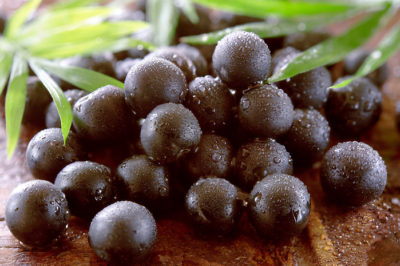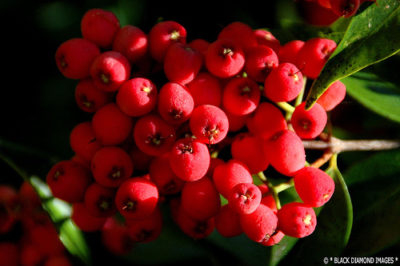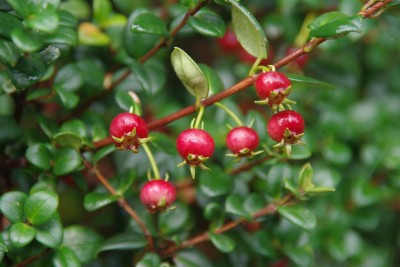Those off-the-gridders living in the south, where freezing temperatures are rare, have the opportunity to grow a wide array of berries that we northerners can only dream of.
What makes a berry the best choice for a southern garden? Well, that’s subjective, of course. However, for those homesteaders that are off-the-grid and preparing for an unknown future, the best choices in my opinion share two characteristics. First, they can be eaten fresh or preserved, so that some form of the berry is available all year for consumption. Second, a best choice berry should have some quality that makes it desirable for other nearby homesteads. That is so it can be used in barter.
The first three – acai, riberry, and Chilean guava – are unique, flavorful and would be sought after by neighbors looking for something different. The last, grapes, can be processed into wine.
1. Acai Berries
Acai trees are a species of palm tree that produce small, dark purple berries. They are chock full of vitamins, minerals and antioxidants.
The Best Source For Non-GMO Heirloom Seeds Is Right Here! [2]
Purchase an acai tree from a reputable dealer and choose a location with partial shade. Dig a hole twice as wide and three times as deep as the container the tree came in. Backfill the hole with a 50-50 mix of native soil and compost, up to the level so that the root crown is just above the surrounding soil.
Once planted, the tree needs about three years to mature. After that, it should yield fruit in spring through early summer. Berries can be used like raspberries or blueberries, or made into wine like grapes.
2. Riberries
Riberry trees are medium in size and native to the coastal rainforests of Australia. The grape-sized, pear-shaped, pink berries taste like cranberries with a little spiciness.
Plant saplings in a partially shaded area and make sure they get plenty of water. The mature berries can be eaten raw, but are more commonly used in sauces. Unlike most berries, the flavor is more savory rather than sweet.
3. Chilean guava
This shrub is native to Chile, growing up to about six feet tall. The shrub produces blueberry-sized fruits that are reddish to purple. They taste reminiscent of guavas and spices, and can be eaten fresh or preserved in jams and jellies.
The Cheap Way To Re-mineralize Your Soil [4]
Plant Chilean guava shrubs in sunny locations in well-drained soil.
4. Grapes
Grapes are believed to be the oldest fruit cultivated by humans, beginning several thousand years ago in southeastern Europe and western Asia. Over the millennia, grapes spread throughout the world and have been adapted to many different climates.
In the U.S., muscadine grapes thrive in the Southeast. Typical muscadine grape cultivars include “Scuppernong,” “Carlos,” and “Higgins.” In the Southwest, European grapes grow well, including the cultivars “Red Malaga,” “Cardinal,” and “Emperor.”
Grapes prefer slightly acidic soil in a fertile, well-drained area. However, they often thrive in a variety of soil conditions. Plant bare-root plants about 10 feet apart in rows that are 12 to 20 feet apart. It takes four to five years for vines to mature. Then they can produce up to 25 pounds of fruit per plant.
Lots of off-the-grid homesteads grow fruit. However, by growing rarer fruit you’ll have something to barter with for other homestead needs you might have. And wine from your grapes will always be a popular item to trade for things you need. (Recommended: 8 Easy Steps To Growing Grapes In Your Own Backyard [6].)
What berries would you add to this list? Share your tips in the section below:
Every Year Gardeners Make This Avoidable Mistake — But You Don’t Have To. Read More Here. [7]


